Brilliant Ideas! Steal this One!
Growing edibles like vegetables, flowers, and herbs is gaining popularity. Why? Because it’s easy! The edibles you grow yourself are healthier, taste better, and in many cases, are cheaper than buying them at the store.
Not all of us have the space or the desire to grow a large vegetable garden. Container gardening means anyone can grow their own crops, even in a small space.
What You’ll Need!
You need the right growing conditions. Vegetables, fruits, edible flowers, and herbs need at least 6 plus hours of direct sun on the plants, every day, for the best results. You need a good soil mix – I like Fafard’s Urban Garden Container Mix (it contains sphagnum peat moss, black earth, coconut husk fibre, Biosol compost, lime, organic fertilizers). Container mix creates the perfect environment for growing vegetables and herbs without all the work of having to mix your own. Don’t forget to feed you container gardens. Try a slow release feed like Farad’s Vegetable Organic 4-3-7 for great results. Simply sprinkle a few of the pellets on the top of the soil and as you water, the nutrients from the fertilizer break down and are released to the plant roots.
When selecting a container for growing vegetables, make sure there are adequate drainage holes in the bottom to take away excess water or rain. Make sure to cover the holes with a piece of landscape fabric so soil doesn’t seep out when you water. Water your containers daily – if not twice a day – in hot, dry weather. The soil needs to be kept moist, not wet. Just a gentle reminder, wait until the chance of frost has passed to set out your vegetable containers. In our area, usually after the long weekend in May.
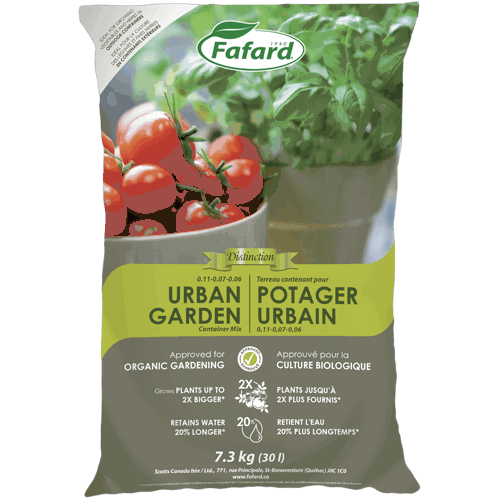
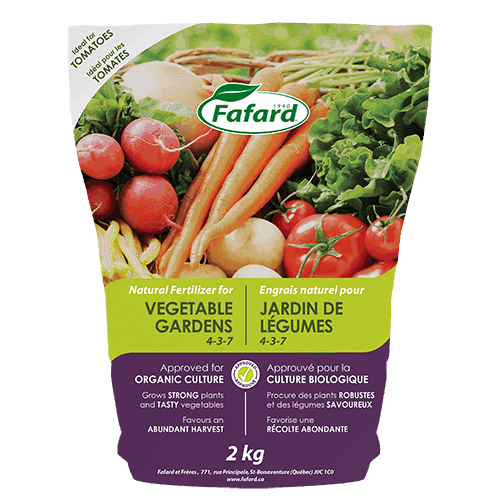
Strawberries in a Hanging Basket
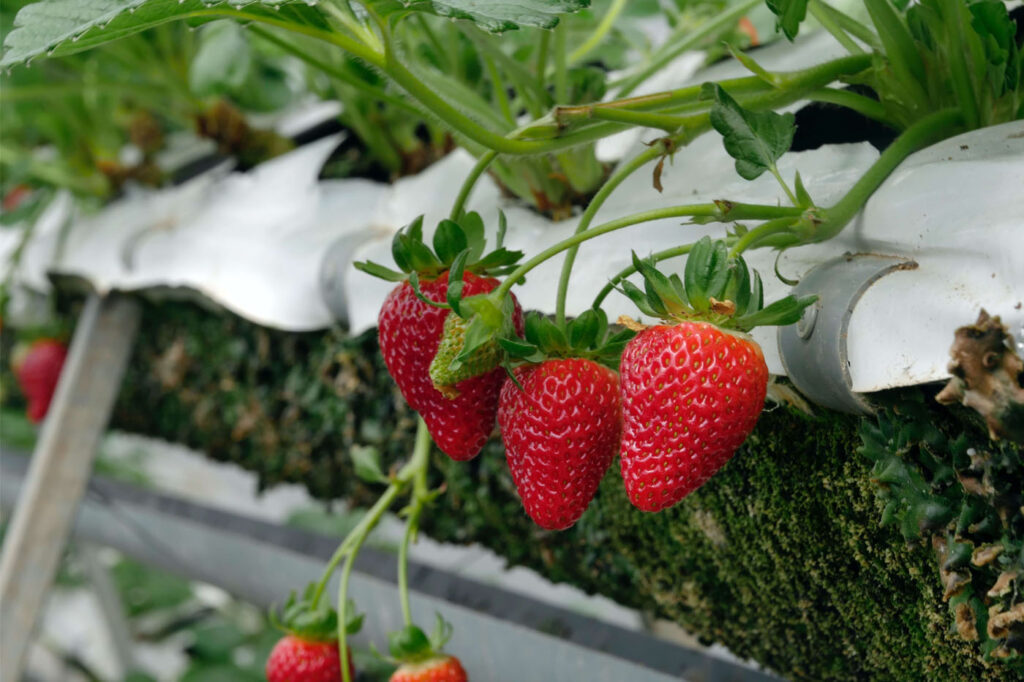
Love strawberries but lack space?
Try strawberries in a hanging basket. For the best yield, try a couple different varieties. June-bearing strawberries produce fruit in early summer whereas ever-bearing strawberries produce fruit from mid-summer through to frost. Plant one hanging basket of each variety and enjoy strawberries all summer long.
How Too!
Fill hanging baskets with Fafard’s Urban Garden Container Mix to about 1 inch from the top of the basket. Using strawberry starter plants, place plants around the hanging basket, evenly spaced, leaving enough room for each to grow. You will need 5 to 6 starter plants per hanging basket. Make sure plants roots are buried in the soil. Hang in a sunny location. Remember to check your hanging baskets daily and water if needed. You’ll know when it’s time to harvest your strawberries because the berries have turned bright red.
Potatoes in a Bag
If you like potatoes, and who doesn’t, try your hand at Potatoes in a Bag. A simple way to get home-grown produce.
How Too!
Start with a potato bag (you can purchased these) or a large burlap bag and place about 6 inches of container mix in the bottom. I would use Fafard’s Urban Garden Container Mix. Place 3 to 5 seed potatoes (it’s okay to mix potato varieties) in the bottom of the bag, evenly spacing out the seed potatoes out, and cover with 3 inches of container mix. At this stage, you don’t need to water. Overwatering can rot the seed potatoes. Once the foliage emerges, you will start to water daily or when the soil is dry. The idea is to keep the soil consistently moist but not overly wet. When the foliage and stems of the potatoes reach a height of 12 inches, add 6 more inches of container mix (this is called hilling) around the base of the plants – it’s okay to cover the lower leaves and stems of the plants with soil. You can mix in a couple tablespoons of Fafard’s Organic Vegetable Fertilizer with the soil for added nutrient. Continue growing your potatoes until stems and foliage are once again 12 inches in height. Add another 6 inches of soil around the base of the plants. At this point you should have about 18-20 inches of soil in the bag. Continue to grow until the potato plants start to wilt and the leaves start to turned brown. It’s time to harvest your potatoes. If you are using a burlap bag, you can simply cut it down the side of the bag and harvest your crop. Enjoy!
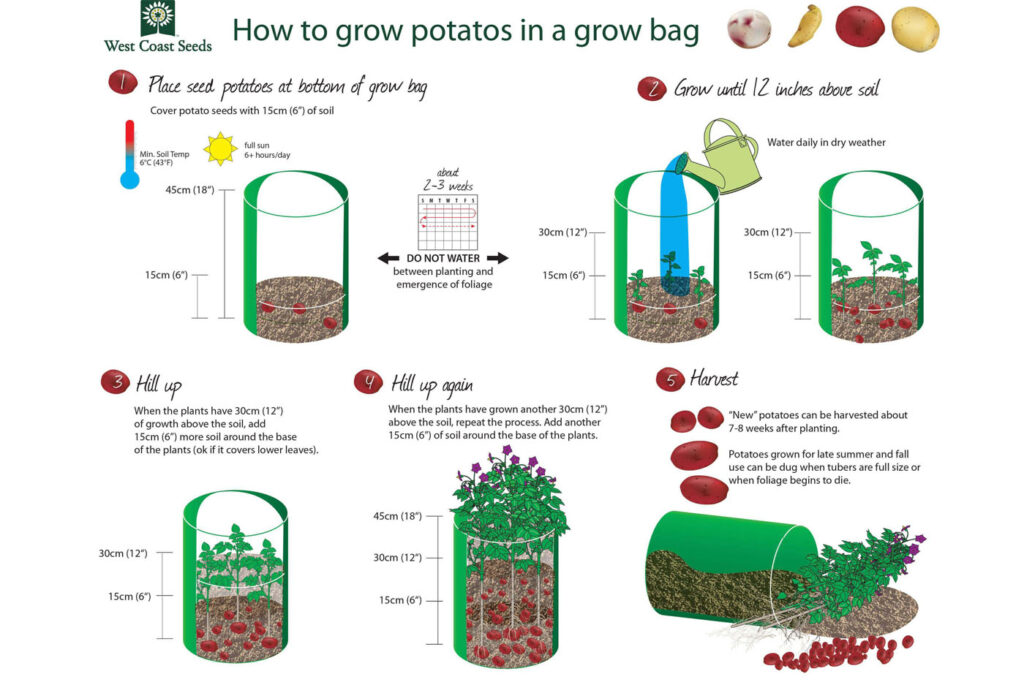
Lettuce in a Barrel
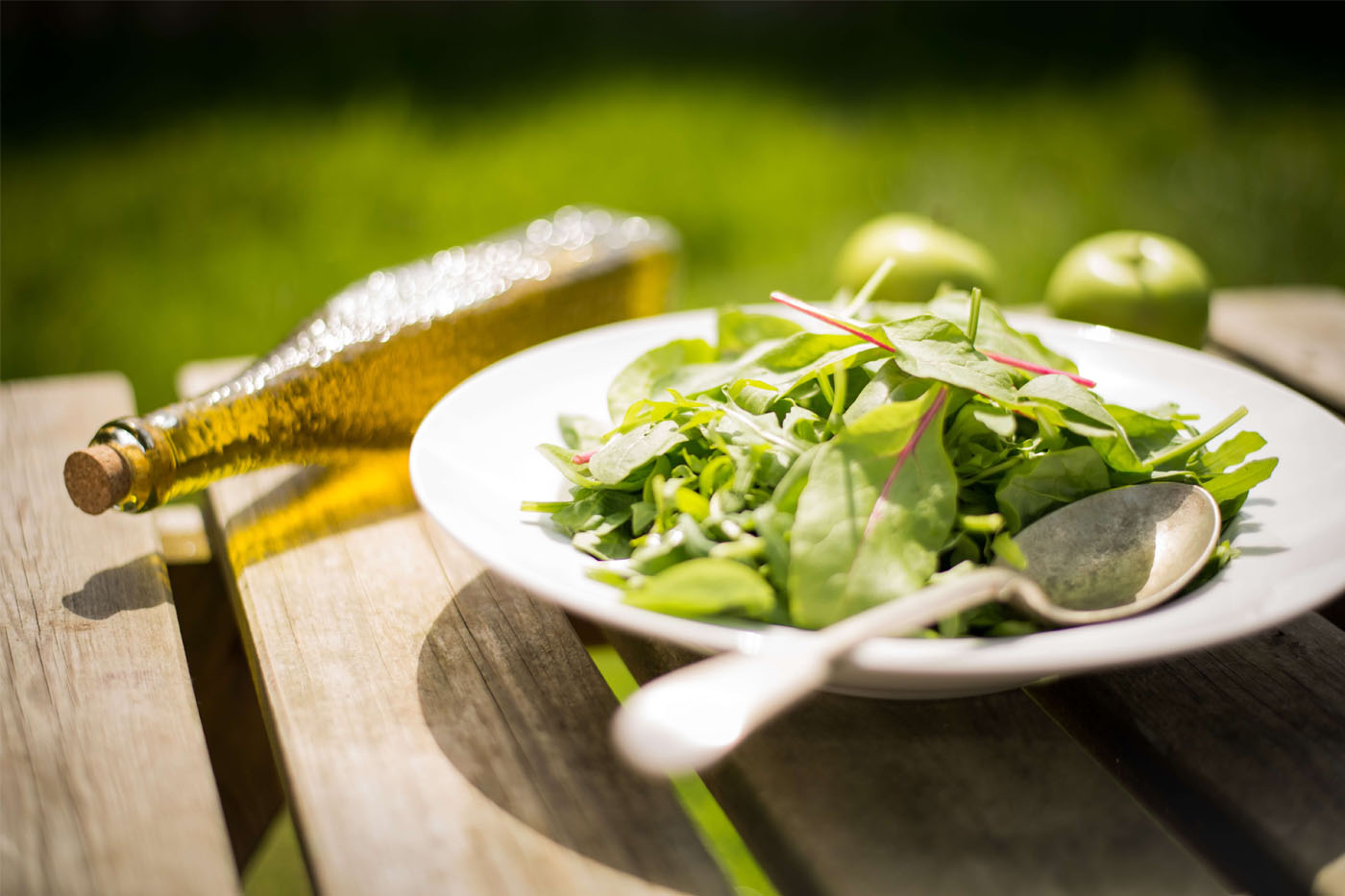
Salad greens and loose lettuce in a barrel (or large container) means you get fresh produce over-and-over. Lettuce is quick growing, takes up little room, and is delicious.
Here’s how it’s done.
Take a large barrel – you need at least 12 inches of soil for best results – fill with Fafard’s Urban Garden Container Mix to about 2 inches from the top of the container and tamp down the soil to get out air pockets. Take a pinch of lettuce seeds and sprinkle them over the soil thinly and evenly – you don’t want too many seeds in one area. Cover the seeds with a fine layer of container mix about a half inch in depth, and very gently firm down the seeds and soil. This ensures the seeds come into direct contact with soil. Carefully water the newly planted seeds using a watering can – you don’t want to wash the seeds around. Move to a sunny location. You will need to check on your seeds, daily. Make sure you keep the seed bed moist, not wet. It will take about 5 to 10 days for the lettuce to germinate. When the seedlings start at appear and are about 1-2 inches in height, you will need to thin them out. Remove some of the seedlings until there is about 2 inches between each of the plants.
Brilliant Idea! Use the removed seedlings to start another container of lettuce.
Keep watering and check your plants daily. In about 4 to 6 weeks you will be rewarded with a lovely crop of lettuce. Use a sharp pair of scissors and cut away the largest outside leaves every couple of days. This will stimulate new leaf growth.
You can start a second container (or even a third container) of lettuce every few weeks for a continuous supply of summer lettuce and salad greens.

No Comments
Great ideas, thank you Lexi. I never considered potatoes….
Hi Lauren. Potatoes-in-a-bag is a great way to get fresh veggies. Easy to do. And fun!
Perfect timing for this article as Shari and I are planning a raised garden this year!
Hi Ron and Shari. I was hoping this would be good timing for this information. I hope you’re doing well and everyone is safe at home. I’m posting Part Two today about container gardening. You might like to read this one as well. Stay well. Lexi